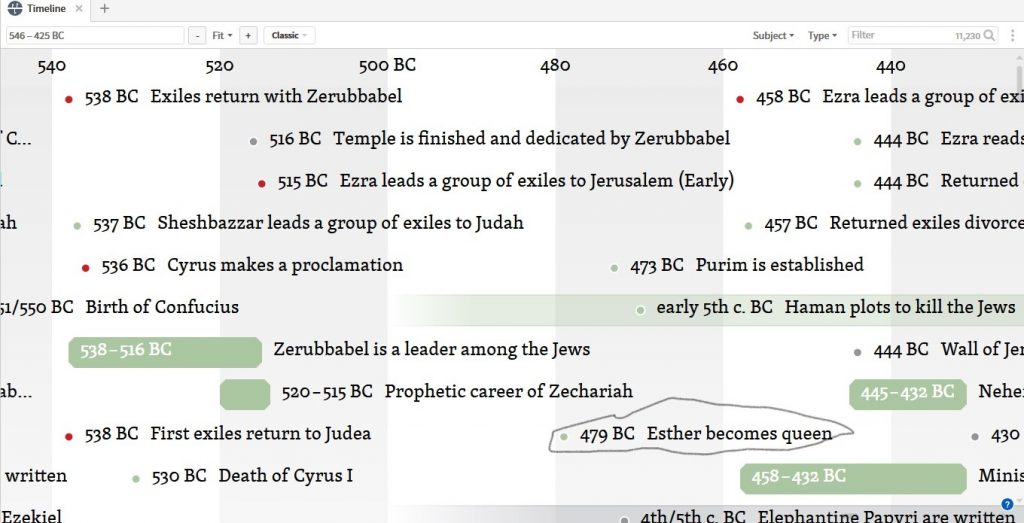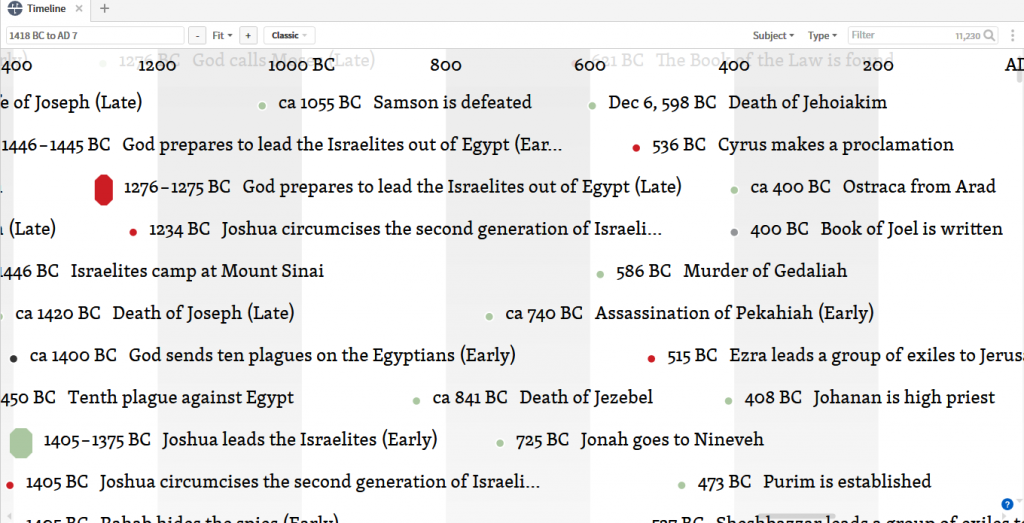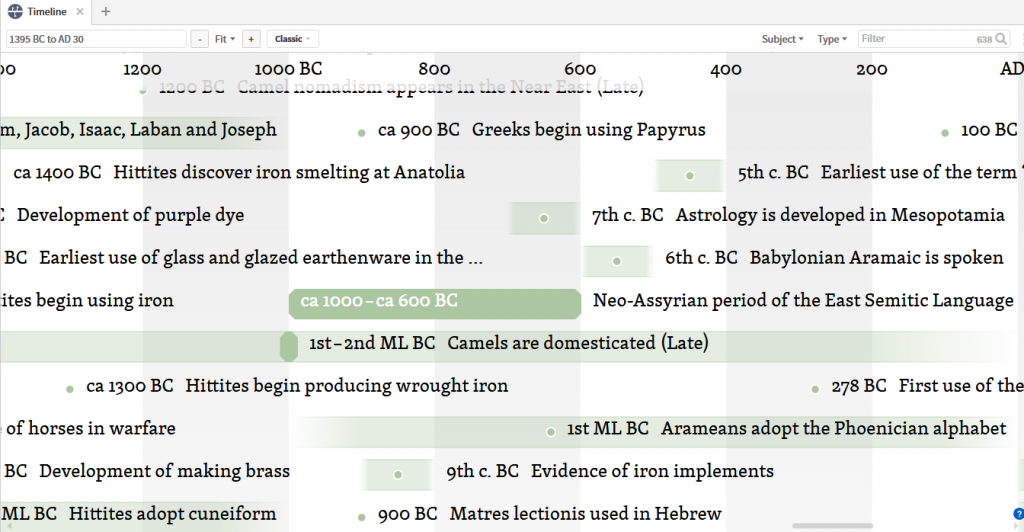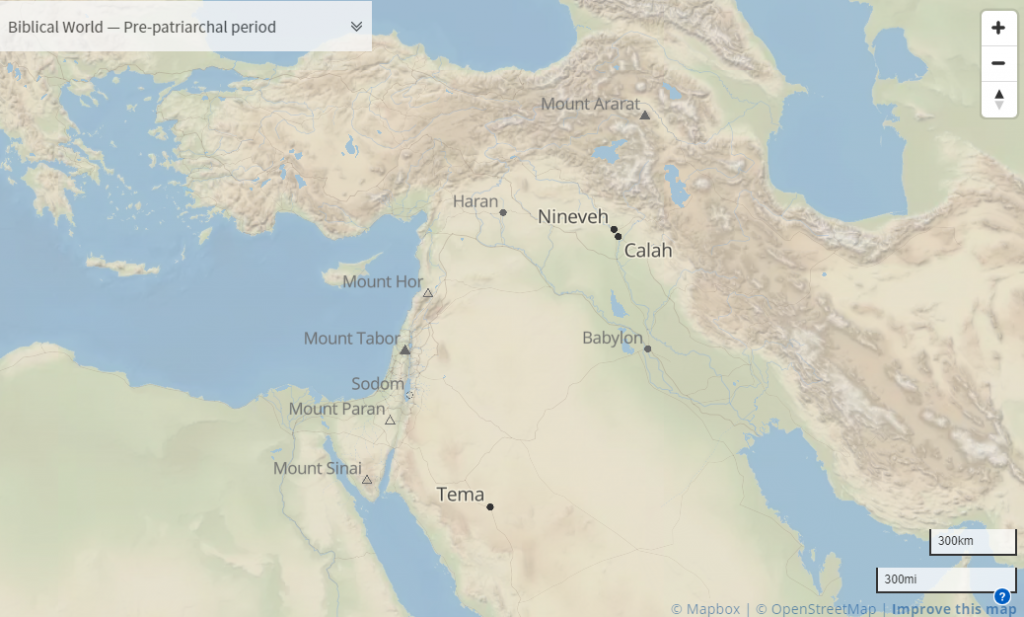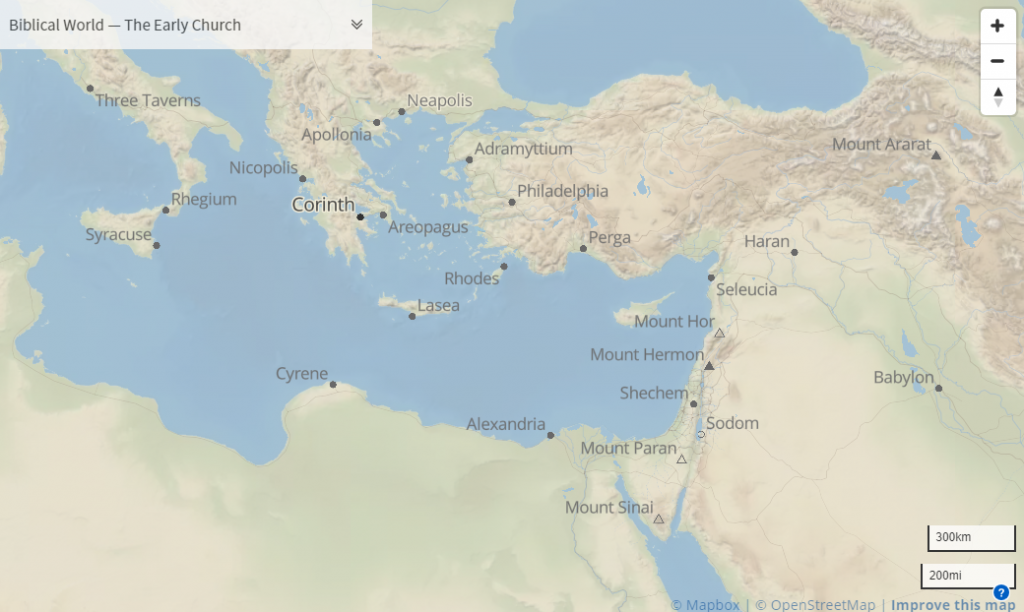I will add info every day during our discussion of this book. And, will add other maps and timelines.
Esther 3:14–5:5
A copy of the edict to be issued as law in every province was published to all the peoples so that they should be ready for this day.
The couriers went out impelled by the king’s command while the decree was issued at the citadel in Susa; and while the king and Haman sat down to drink, the city of Susa was in confusion.
When Mordecai learned all that had been done, he tore his clothes, put on sackcloth and ashes, and went out into the midst of the city and wailed loudly and bitterly.
He went as far as the king’s gate, for no one was to enter the king’s gate clothed in sackcloth.
In each and every province where the command and decree of the king came, there was great mourning among the Jews, with fasting, weeping and wailing; and many lay on sackcloth and ashes.
Then Esther’s maidens and her eunuchs came and told her, and the queen writhed in great anguish. And she sent garments to clothe Mordecai that he might remove his sackcloth from him, but he did not accept them.
Then Esther summoned Hathach from the king’s eunuchs, whom the king had appointed to attend her, and ordered him to go to Mordecai to learn what this was and why it was.
So Hathach went out to Mordecai to the city square in front of the king’s gate.
Mordecai told him all that had happened to him, and the exact amount of money that Haman had promised to pay to the king’s treasuries for the destruction of the Jews.
He also gave him a copy of the text of the edict which had been issued in Susa for their destruction, that he might show Esther and inform her, and to order her to go in to the king to implore his favor and to plead with him for her people.
Hathach came back and related Mordecai’s words to Esther.
Then Esther spoke to Hathach and ordered him to reply to Mordecai:
“All the king’s servants and the people of the king’s provinces know that for any man or woman who comes to the king to the inner court who is not summoned, he has but one law, that he be put to death, unless the king holds out to him the golden scepter so that he may live. And I have not been summoned to come to the king for these thirty days.”
They related Esther’s words to Mordecai.
Then Mordecai told them to reply to Esther, “Do not imagine that you in the king’s palace can escape any more than all the Jews.
“For if you remain silent at this time, relief and deliverance will arise for the Jews from another place and you and your father’s house will perish. And who knows whether you have not attained royalty for such a time as this?”
Then Esther told them to reply to Mordecai,
“Go, assemble all the Jews who are found in Susa, and fast for me; do not eat or drink for three days, night or day. I and my maidens also will fast in the same way. And thus I will go in to the king, which is not according to the law; and if I perish, I perish.”
So Mordecai went away and did just as Esther had commanded him.
Now it came about on the third day that Esther put on her royal robes and stood in the inner court of the king’s palace in front of the king’s rooms, and the king was sitting on his royal throne in the throne room, opposite the entrance to the palace.
When the king saw Esther the queen standing in the court, she obtained favor in his sight; and the king extended to Esther the golden scepter which was in his hand. So Esther came near and touched the top of the scepter.
Then the king said to her, “What is troubling you, Queen Esther? And what is your request? Even to half of the kingdom it shall be given to you.”
Esther said, “If it pleases the king, may the king and Haman come this day to the banquet that I have prepared for him.”
Then the king said, “Bring Haman quickly that we may do as Esther desires.” So the king and Haman came to the banquet which Esther had prepared.
Esther 2:17–3:15 – Wednesday, May 13, 2020
The king loved Esther more than all the women, and she found favor and kindness with him more than all the virgins, so that he set the royal crown on her head and made her queen instead of Vashti.
Then the king gave a great banquet, Esther’s banquet, for all his princes and his servants; he also made a holiday for the provinces and gave gifts according to the king’s bounty.
When the virgins were gathered together the second time, then Mordecai was sitting at the king’s gate.
Esther had not yet made known her kindred or her people, even as Mordecai had commanded her; for Esther did what Mordecai told her as she had done when under his care.
In those days, while Mordecai was sitting at the king’s gate, Bigthan and Teresh, two of the king’s officials from those who guarded the door, became angry and sought to lay hands on King Ahasuerus.
But the plot became known to Mordecai and he told Queen Esther, and Esther informed the king in Mordecai’s name.
Now when the plot was investigated and found to be so, they were both hanged on a gallows; and it was written in the Book of the Chronicles in the king’s presence.
After these events King Ahasuerus promoted Haman, the son of Hammedatha the Agagite, and advanced him and established his authority over all the princes who were with him.
All the king’s servants who were at the king’s gate bowed down and paid homage to Haman; for so the king had commanded concerning him. But Mordecai neither bowed down nor paid homage.
Then the king’s servants who were at the king’s gate said to Mordecai, “Why are you transgressing the king’s command?”
Now it was when they had spoken daily to him and he would not listen to them, that they told Haman to see whether Mordecai’s reason would stand; for he had told them that he was a Jew.
When Haman saw that Mordecai neither bowed down nor paid homage to him, Haman was filled with rage.
But he disdained to lay hands on Mordecai alone, for they had told him who the people of Mordecai were; therefore Haman sought to destroy all the Jews, the people of Mordecai, who were throughout the whole kingdom of Ahasuerus.
In the first month, which is the month Nisan, in the twelfth year of King Ahasuerus, Pur, that is the lot, was cast before Haman from day to day and from month to month, until the twelfth month, that is the month Adar.
Then Haman said to King Ahasuerus, “There is a certain people scattered and dispersed among the peoples in all the provinces of your kingdom; their laws are different from those of all other people and they do not observe the king’s laws, so it is not in the king’s interest to let them remain.
“If it is pleasing to the king, let it be decreed that they be destroyed, and I will pay ten thousand talents of silver into the hands of those who carry on the king’s business, to put into the king’s treasuries.”
Then the king took his signet ring from his hand and gave it to Haman, the son of Hammedatha the Agagite, the enemy of the Jews.
The king said to Haman, “The silver is yours, and the people also, to do with them as you please.”
Then the king’s scribes were summoned on the thirteenth day of the first month, and it was written just as Haman commanded to the king’s satraps, to the governors who were over each province and to the princes of each people, each province according to its script, each people according to its language, being written in the name of King Ahasuerus and sealed with the king’s signet ring.
Letters were sent by couriers to all the king’s provinces to destroy, to kill and to annihilate all the Jews, both young and old, women and children, in one day, the thirteenth day of the twelfth month, which is the month Adar, and to seize their possessions as plunder.
A copy of the edict to be issued as law in every province was published to all the peoples so that they should be ready for this day.
The couriers went out impelled by the king’s command while the decree was issued at the citadel in Susa; and while the king and Haman sat down to drink, the city of Susa was in confusion.1
1 New American Standard Bible: 1995 update. (1995). (Es 2:17–3:15). La Habra, CA: The Lockman Foundation.
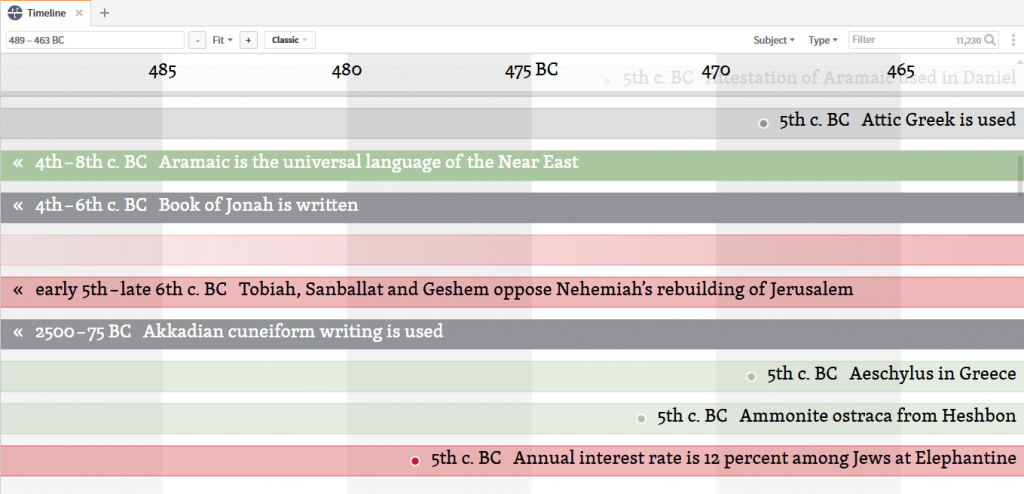
Story of Esther▶
Esther becomes queen of
An accusation in the time of Xerxes
Vashti refuses to appear before Xerxes
Xerxes deposes Vashti
Xerxes seeks a new
Haman plots against the Jews
Mordecai uncovers a conspiracy
Mordecai refuses to kneel to Haman
Haman plans to destroy the Jews
Esther decides to intercede for the Jews▶
Haman’s plot is
Xerxes honors Mordecai
Haman is told he will be
Haman is killed
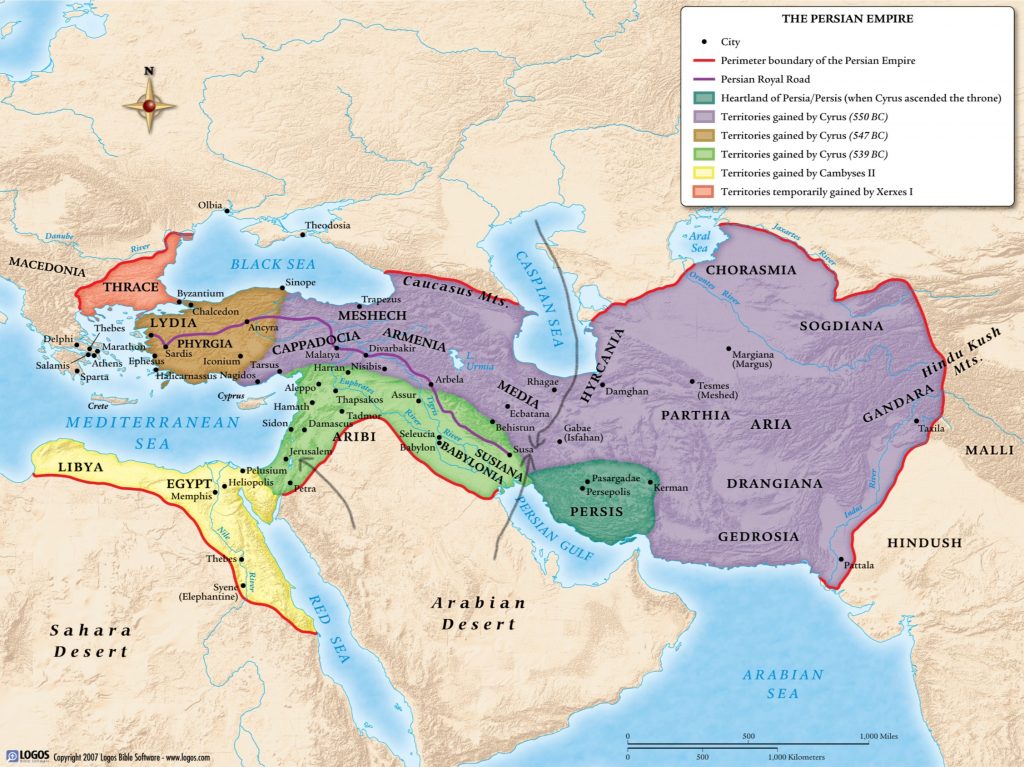
BTW: Near the South end of that left line is approximately where my dad intentionally ran over a King Cobra with a tractor in 1985.
The near verticle arrows in the middle point toward Susa, the Location of the Events of the Book of Esther.
